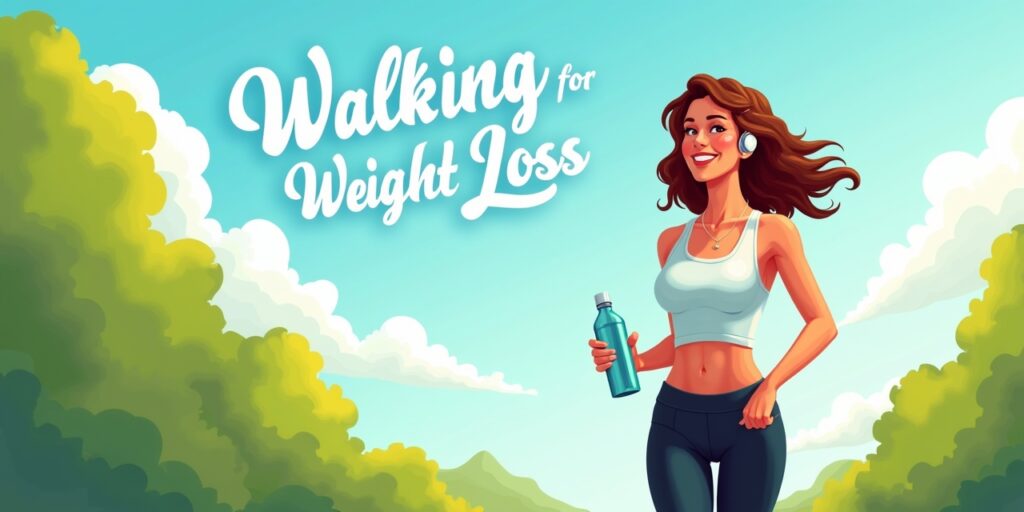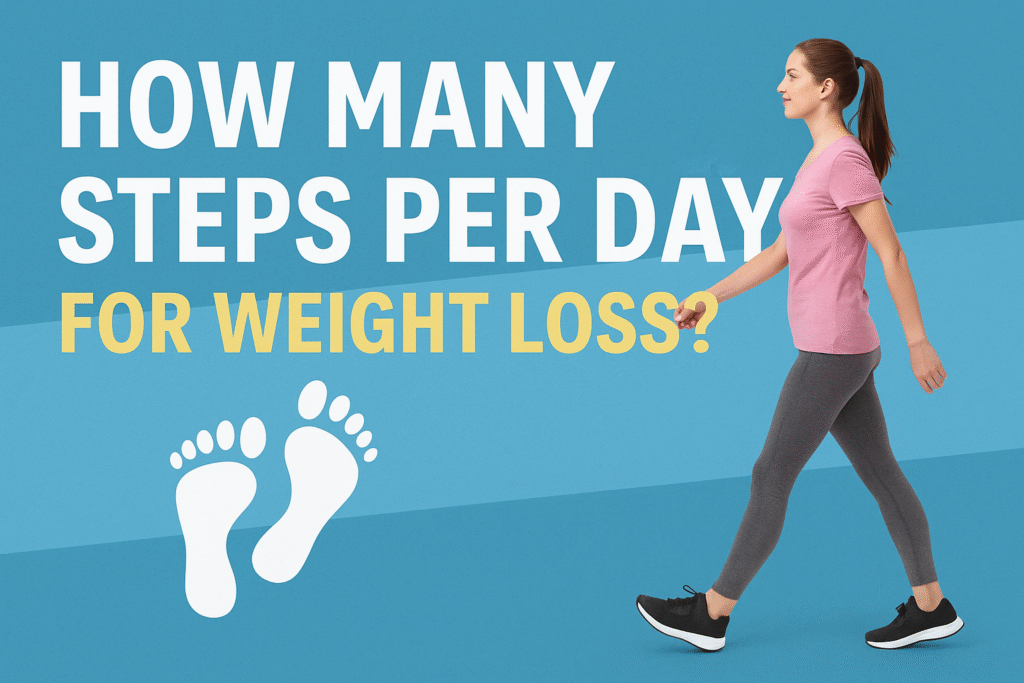Looking for a simple, no-equipment Walking for Weight Loss?
Walking is one of the most underrated fat-burning tools. It’s easy, low-impact, and free—and with the right approach, it can help you shed pounds effectively.

In this beginner’s guide, you’ll learn how to walk for weight loss the smart way—without pain or confusion.
Why Walking for Weight Loss
- Burns calories without stress on joints
- Boosts metabolism and energy
- Reduces belly fat
- Supports better sleep and mood
Even 30 minutes of walking a day can make a huge difference over time.
Step-by-Step Beginner Plan (First 4 Weeks)
Week 1:
- Walk 15–20 mins/day
- Pace: Relaxed
- Goal: Build habit
Week 2:
- Walk 25 mins/day
- Add 2 mins fast pace mid-walk
- 5 days/week
Week 3:
- Walk 30 mins/day
- Try “interval walking” (slow–fast–slow)
- Track steps (target: 6,000–8,000)
Week 4:
- Walk 40 mins/day OR 2 sessions of 20 mins
- Add light incline (hills or treadmill)
- Aim for 8,000–10,000 steps
READ MORE: Top 7 Foods That Naturally Boost Metabolism
Bonus Tips to Burn More Fat
- Walk after meals – helps control blood sugar
- Swing your arms – boosts calorie burn
- Walk with a podcast – keeps your mind engaged
- Wear good walking shoes – avoid foot pain
- Track with an app (Google Fit, Pacer, Fitbit)
Combine with Smart Eating
Walking alone helps, but for real results:
- Eat more protein & fiber
- Avoid sugary drinks/snacks
- Stay hydrated
- Limit processed foods
Conclusion
Walking is simple but powerful. You don’t need expensive equipment or hours at the gym.
Start small, stay consistent, and combine walking with healthy eating. Within weeks, you’ll feel the difference—in your body and confidence.
FAQ
Q1: Can I really lose weight just by walking?
Yes! Walking burns calories, reduces belly fat, and improves metabolism—especially when done consistently and paired with healthy eating.
Q2: How long should I walk each day to see results?
Start with 15–20 minutes a day and gradually increase to 30–40 minutes. Even short walks after meals can help burn fat and control blood sugar.
Q3: Do I need to walk fast to lose weight?
Not always. A mix of moderate walking and short bursts of fast-paced intervals (like 1–2 minutes) helps increase calorie burn without stressing your body.
Q4: How many steps should I aim for daily?
Aim for 6,000–10,000 steps/day. Use a step-tracking app (like Google Fit, Fitbit, or Pacer) to stay on target.
Q5: What’s the best time to walk for fat loss?
Anytime you’ll stick with it! But walking after meals can help with digestion and blood sugar control.
Q6: Do I need any special gear to start walking?
Just comfortable walking shoes with good support. You don’t need a gym or treadmill—your local park or sidewalk works just fine.
Q7: How can I stay motivated to walk daily?
Try walking with a friend, listening to a podcast or music, setting small goals, or rewarding yourself for progress.
Q8: Is walking better than running?
Walking is low-impact, easier on the joints, and sustainable for most people. While running burns more calories faster, walking is safer for beginners and can be done longer.





Pingback: How Many Steps Per Day for Weight Loss? (Complete Guide) - healthnfitnes.com